What (Laird Hamilton) Thinks About Big Wave Surfing
Story by Elliot Struck | All photos by BenThouard.com (Facebook here) Welcome back to What (insert name) Thinks About Big Wave Surfing, an interview series that snapshots big wave surfing, like, right now. Last week we had the pleasure of Shane Dorian’s opinions. This week, we’re grabbing the tow rope of foot strap surfing’s godfather, Laird Hamilton. Now, Laird’s Hollywood cameos, Malibu lyfe, and two-tones-of-gold adonis aura mightn’t be for everyone. But no matter what your thoughts on Mr Hamilton are, there’s two particular elements of his existence that changed big wave surfing and cannot be ignored. In the real early 90s, Laird was part of the Strapped Crew (along with chums Darrick Doerner and Buzzy Kerbox), who introduced the world to tow surfing at Jaws. It rebooted the status quo of what could be ridden at the time. And then, there was the Millennium wave, a fluoro blue mutant that Laird whipped at Teahupoo in 2000 which, 13 years later, is still one of the most juiced waves ever ridden on that particular hunk of coral. But what did Laird really start when he grabbed the rope? Is he proud of his legacy? Or did he unknowingly open the door for too many dicks on the dancefloor? Given Laird’s recent and well-publicised comments about Carlos Burle’s double-double at Nazare (no animal style), and the fact that he still commands much heft in the world of avalanche slaying, Stab itched to learn what The Good Laird really thinks about such things… You pioneered tow surfing – Are you proud of where it’s gone? Laird: That’s a tricky question. I’m amazed by the kind of waves being ridden. But where it’s gone… there’s a lot of peripheral things that I’m not as inspired by. As far as guys paddling at Jaws, or towing in at Teahupoo when it’s completely off the scale, or trying to ride giant waves in Europe or whatever, on that side of things I’m definitely proud. I’m proud of the pursuit of it. As far as stuff around it that I’m not quite as inspired by… It’s kinda like the gold rush. For me, the part that’s a bit of a bummer is some of the media stuff around it. I don’t love it. I don’t even wanna quote the events themselves but some of these awards and documentation, like, “I rode the biggest wave of the year,” and all that kinda stuff, I find that part rather confusing. A wave has so many characteristics that I think it’s so difficult to put titles and claims on things. Obviously I haven’t participating in the organised, structured surfing world, but I mean, Kelly Slater is an 11-time world champion, that’s clean, pretty cut and dry. When you’re the ASP champion, there’s a certain format, there’s dimensions that you can understand. But when you get this other part of surfing and people making claims, that’s trickier. I think there needs to be some sort of parameters on that. People start spewing stuff out at will, and I’m looking at that thinking, “That doesn’t make us look good as athletes and professionals.” (continued below) Cleaving the face of a Jaws monster, strapped. Laird’s done this more than anyone else alive. This was back in 2009. Tell me about tow vs paddle. If I wasn’t doing other things that I’m inspired by, I would probably spend more time paddling just because of the nature of it. The thing I do love about the defined line between tow and paddle is when you go somewhere like Teahupoo. Other waves tend to have more of a grey area between when towing is optimum and when paddling is still possible. But at Teahupoo, as soon as it’s 15 feet it’s like, ok, it’s unpaddleable now. And every surfer will unanimously agree that line is super clear. Other breaks don’t have that clean line. As soon as Teahupoo does its thing, everyone goes to tow mode. It speaks to having the right equipment and tools for the job. Being versatile gives you options. If you’re waiting for the most perfect day in 20 years without a drop of water out of place, there’s gonna be a lot of down days. And I don’t want down days, that’s when you get in trouble. Jaws has become a paddle wave! There’s a couple of things going on. For one, that’s a way to control the chaos. In the early days of chaos, I would’ve gladly gone out there and paddled just because I knew I could stop so many guys from towing and stop the chaos. But I felt like there wasn’t enough of me to do it, it wasn’t like it was me and my 10 buddies. It was me and nobody, so I’m not gonna go paddle out there and ruin it for 20 other guys who wanna tow the wave. I didn’t find that a great thing. Another thing that’s happened is, we just haven’t had a lot of big surf in the last few years. People can disagree, but the reality is that if you really look at our winters and the swells and intervals we’ve had, compared to the first 10 or 12 years of Jaws, there’s been minimal giant surf. We’ve had minimal 60-70 foot faced Jaws, it just hasn’t been happening a lot. And we’ve had unbelievably good winds, we’ve had these variable winds the last few years in Hawaii. If the trade winds are blowing 35 knots and it’s 70 foot faces, there’s only two pieces of equipment you wanna use out at Peahi, and that’s the smallest board you can ride with footstraps, and a waterski. The focus to push that paddle boundary is something that’s got a lot of guys captivated. Once you get everybody on a jetski that can go 70 miles an hour, you’ve got some rookie paddler who’d be at the back of the pack, but is all of a sudden bumping rails with you
Story by Elliot Struck | All photos by BenThouard.com (Facebook here)
Welcome back to What (insert name) Thinks About Big Wave Surfing, an interview series that snapshots big wave surfing, like, right now. Last week we had the pleasure of Shane Dorian’s opinions. This week, we’re grabbing the tow rope of foot strap surfing’s godfather, Laird Hamilton.
Now, Laird’s Hollywood cameos, Malibu lyfe, and two-tones-of-gold adonis aura mightn’t be for everyone. But no matter what your thoughts on Mr Hamilton are, there’s two particular elements of his existence that changed big wave surfing and cannot be ignored.
In the real early 90s, Laird was part of the Strapped Crew (along with chums Darrick Doerner and Buzzy Kerbox), who introduced the world to tow surfing at Jaws. It rebooted the status quo of what could be ridden at the time.
And then, there was the Millennium wave, a fluoro blue mutant that Laird whipped at Teahupoo in 2000 which, 13 years later, is still one of the most juiced waves ever ridden on that particular hunk of coral.
But what did Laird really start when he grabbed the rope? Is he proud of his legacy? Or did he unknowingly open the door for too many dicks on the dancefloor? Given Laird’s recent and well-publicised comments about Carlos Burle’s double-double at Nazare (no animal style), and the fact that he still commands much heft in the world of avalanche slaying, Stab itched to learn what The Good Laird really thinks about such things…
You pioneered tow surfing – Are you proud of where it’s gone?
Laird: That’s a tricky question. I’m amazed by the kind of waves being ridden. But where it’s gone… there’s a lot of peripheral things that I’m not as inspired by. As far as guys paddling at Jaws, or towing in at Teahupoo when it’s completely off the scale, or trying to ride giant waves in Europe or whatever, on that side of things I’m definitely proud. I’m proud of the pursuit of it. As far as stuff around it that I’m not quite as inspired by… It’s kinda like the gold rush. For me, the part that’s a bit of a bummer is some of the media stuff around it. I don’t love it. I don’t even wanna quote the events themselves but some of these awards and documentation, like, “I rode the biggest wave of the year,” and all that kinda stuff, I find that part rather confusing. A wave has so many characteristics that I think it’s so difficult to put titles and claims on things. Obviously I haven’t participating in the organised, structured surfing world, but I mean, Kelly Slater is an 11-time world champion, that’s clean, pretty cut and dry. When you’re the ASP champion, there’s a certain format, there’s dimensions that you can understand. But when you get this other part of surfing and people making claims, that’s trickier. I think there needs to be some sort of parameters on that. People start spewing stuff out at will, and I’m looking at that thinking, “That doesn’t make us look good as athletes and professionals.”
(continued below)
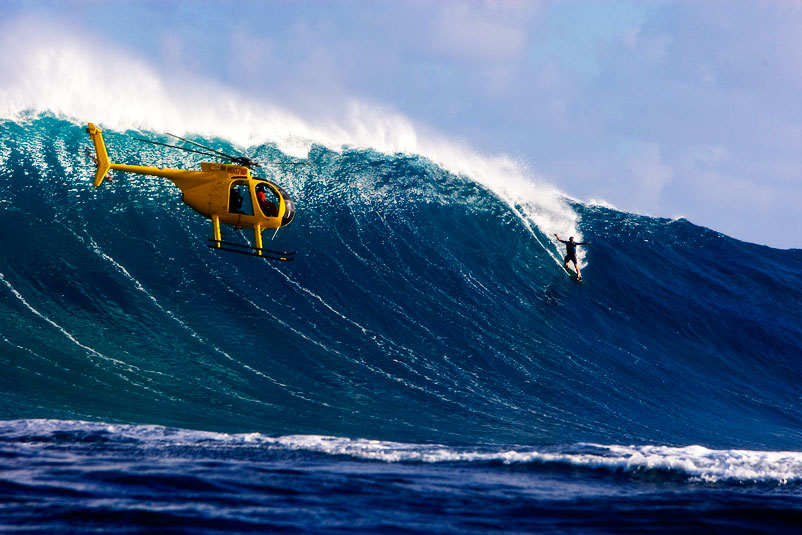
Cleaving the face of a Jaws monster, strapped. Laird’s done this more than anyone else alive. This was back in 2009.
Tell me about tow vs paddle. If I wasn’t doing other things that I’m inspired by, I would probably spend more time paddling just because of the nature of it. The thing I do love about the defined line between tow and paddle is when you go somewhere like Teahupoo. Other waves tend to have more of a grey area between when towing is optimum and when paddling is still possible. But at Teahupoo, as soon as it’s 15 feet it’s like, ok, it’s unpaddleable now. And every surfer will unanimously agree that line is super clear. Other breaks don’t have that clean line. As soon as Teahupoo does its thing, everyone goes to tow mode. It speaks to having the right equipment and tools for the job. Being versatile gives you options. If you’re waiting for the most perfect day in 20 years without a drop of water out of place, there’s gonna be a lot of down days. And I don’t want down days, that’s when you get in trouble.
Jaws has become a paddle wave! There’s a couple of things going on. For one, that’s a way to control the chaos. In the early days of chaos, I would’ve gladly gone out there and paddled just because I knew I could stop so many guys from towing and stop the chaos. But I felt like there wasn’t enough of me to do it, it wasn’t like it was me and my 10 buddies. It was me and nobody, so I’m not gonna go paddle out there and ruin it for 20 other guys who wanna tow the wave. I didn’t find that a great thing. Another thing that’s happened is, we just haven’t had a lot of big surf in the last few years. People can disagree, but the reality is that if you really look at our winters and the swells and intervals we’ve had, compared to the first 10 or 12 years of Jaws, there’s been minimal giant surf. We’ve had minimal 60-70 foot faced Jaws, it just hasn’t been happening a lot. And we’ve had unbelievably good winds, we’ve had these variable winds the last few years in Hawaii. If the trade winds are blowing 35 knots and it’s 70 foot faces, there’s only two pieces of equipment you wanna use out at Peahi, and that’s the smallest board you can ride with footstraps, and a waterski. The focus to push that paddle boundary is something that’s got a lot of guys captivated. Once you get everybody on a jetski that can go 70 miles an hour, you’ve got some rookie paddler who’d be at the back of the pack, but is all of a sudden bumping rails with you because his ski is just as fast as yours. And that’s where towing becomes chaotic, when you have a lack of structure in the lineup. When you paddle, the structure makes itself known. The pecking order is established by the best paddlers, and the best paddlers are usually the best surfers. And that’s great. The necessity for structure is mandatory. We policed it in the old days on the skis, and it becomes a whole job in itself. I’ve spent a good portion of my career surfing in lineups like Pipeline and other places where it’s all about the pecking order and the structure. People may not like it at times, but organisation is essential. When you get too many skis in the lineup, that ruins the whole thing. It becomes like a feeding frenzy.
(continued below)
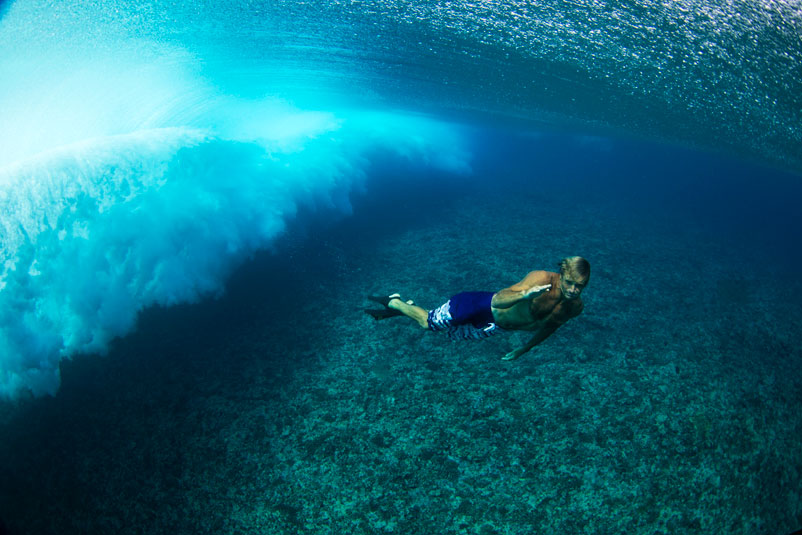
You were very vocal about Carlos Burle’s Nazare wave. Where were you coming from? And, if he’d paddled it, how would the reception have been different? If he paddled that wave, for me, it wouldn’t have erased the fact that he wiped out. Obviously it would’ve been a greater achievement. We have a saying: “There’s no honour in no attempt, but great honour in a failed attempt.” Hats off to his attempt and I respect the courage it takes to go out and attempt riding giant waves. That in itself is an honourable deed. But when people are coming out with claims like “I rode the biggest wave”, you have to look at whether or not they made it. If you take off on a giant barrel at Pipeline and you travel all the way to the very end, then the lip knocks you off, they’re gonna give you a three. You’re not gonna get a 10. You’re not gonna win Wave Of The Winter. If Carlos paddled into that wave it would’ve been a greater achievement than towing, but him crashing still brings up the point of finishing the wave. Had I not been asked, I wouldn’t have said it. These people called me and asked me what I thought. The number one objective in surfing is to make the wave. That starts when you’re three years old and you ride a one foot wave. What do you do? You just try to make it. And you spend your whole career trying to make the aerial, make the section, make the tube, or just make the wave. That’s what we do, that’s what surfing is all about. And I feel again, that’s one of those things that I’m not proud of in surfing: When people are rewarded for failures. If you’re gonna get a reward for wipeout of the year, hats off, sometimes the wipeouts are the greatest rides you’ll ever get and can definitely be the most memorable. But let’s keep it in perspective about what a wipeout is.
Has tow become its own sport, or offshoot, like wind surfing or SUP? I think towing has always been its own discipline. The thing is, the amount of days that are really optimum for doing it means that it will always have a niche to it. I don’t think towing’s ever gotten to a place where it’s not niche. But so is every discipline within surfing. People confuse like, “This is surfing and that’s not surfing.” But if you go to Makaha, where all the Hawaiians surf, and you say “SUP is not surfing,” they’ll look at you like, “Do you even know what surfing is? We invented it and we’ll tell you what surfing is.” They’ll say that surfing is the act of riding a wave, and they don’t care if you’re on a board, a boat, a six-man canoe, a huge bully board, whatever. And I quote Brian Keaulana, I love his quote because he said “Don’t define me by my equipment.” At the end of the day these are just tools. It’s like being a carpenter, and a using a saw, a hammer, a square, a measuring tape, some you use more than others, but in the end they’re all just another tool in your belt to really create an opportunity to maximise your conditions. If the surf is 100 feet, and it’s blowing 35 knots and you’re gonna go out and try to ride it, I suggest you get yourself a tow partner and get out there and make it safer. Part of what’s happening in paddling is, you’re gonna have a few guys say they’re doing it all alone, and they can refuse a pickup all they want, but there’s a certain comfort in knowing there are people ready to come in and rescue. At Mavericks it’s illegal to have a ski, but then guys are dying out there too. At the end of the day, I think we need to focus more on the camaraderie of big wave riding, and really work as a team and look out for one another, and not try to be such individualists. I can say all the things I’ve had an opportunity to be involved with and participate in really occurred because we had the camaraderie of a unit. It’s like in war, you can have a sniper, but there’s nothing like a good platoon of the boys all together sharing that experience and looking out for each other. And I think that’s happening in big wave paddling right now. You’ve got Shane (Dorian) and Mark (Healey) and those guys, and they have individualism but they also have this bond where they’re going out there together and using that unity to create a certain amount of confidence. Which is essential in the pursuit of any of this.
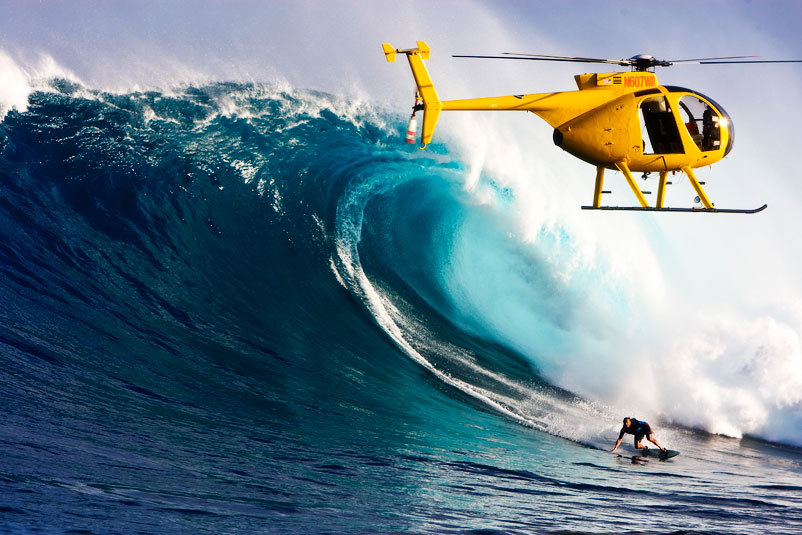
Cornering like it’s the motorcycle grand prix, with iron butterfly suspended above.


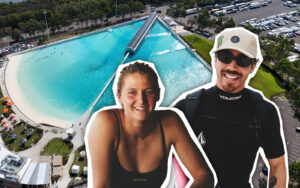
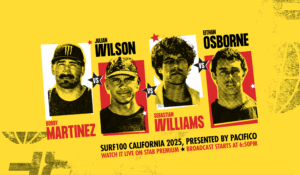
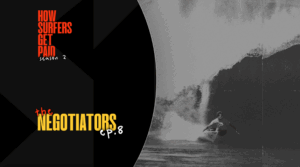
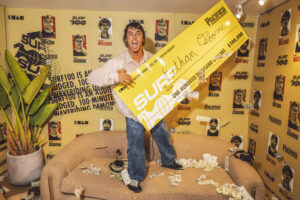
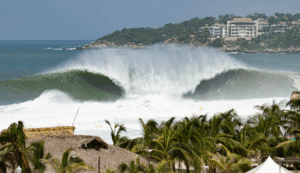







Comments
Comments are a Stab Premium feature. Gotta join to talk shop.
Already a member? Sign In
Want to join? Sign Up